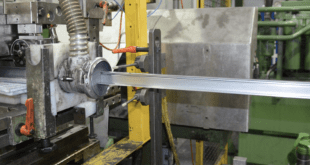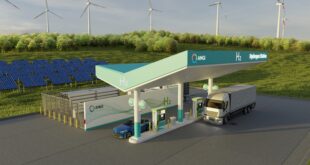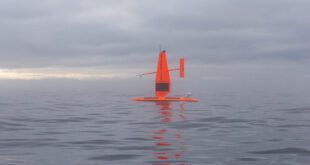TEXAS OVERTAKES CALIFORNIA AS TOP WIND ENERGY STATE
Record year for new wind still forecast for 2006
As the U.S. wind energy industry stayed on pace for another record year, Texas for the first time supplanted historic leader California as the top state in cumulative wind power capacity, according to the American Wind Energy Association’s (AWEA) Second Quarter Market Report.
The report also shows that U.S. developers brought online a capacity total of 822 megawatts (MW) in the first half of the year. With the strong growth, the U.S.’s cumulative wind power capacity surged to 9,971 MW—within close striking distance of the 10-gigawatt (10,000-MW) milestone. (For a listing of projects completed and under construction, see below.)
Texas ’s cumulative total now stands at 2,370 MW of capacity—enough to power over 600,000 average American homes—followed by California’s 2,323 MW. Texas edged ahead of California by adding a total of 375 MW, about half of the total amount installed in the country since the beginning of the year.
It’s a historic moment. California has led the nation in installed wind capacity uninterruptedly for nearly 25 years, ever since the first wind farms were built there in late 1981, and at one time the Golden State was host to more than 80 percent of the wind capacity in the entire world. However, energy and electricity prices tanked during the global oil glut of the 1980s, putting California’s wind power boom on hold.
But Texas by no means has been the lone state busy developing wind power projects. In fact, while Texas took the capacity crown from the perennial state leader, development activity in California has not exactly been dormant, with PPM Energy’s (PPM) 150-MW Shiloh Wind Project in Solano County and the Sacramento Municipal Utility District’s 24-MW project near Rio Vista coming online earlier in the year.
Developers continue their steady advance in project activity while the industry confronts a series of inevitable challenges, one being the interplay between wind turbines and military radar. At AWEA’s annual conference, the WINDPOWER 2006 Conference & Exhibition in June, industry players gathered for a siting panel on military issues, an event that brought together stakeholders from all sides of the radar issue. At the session Lt. Col. William Crowe, chief of airspace for the U.S. Air Force, offered to serve as a point of contact for the industry as the various parties work through the challenges and concerns.
Meanwhile, the industry forges ahead, despite delays in some projects due to radar issues. AWEA forecasts that the industry remains on track to install more than 3,000 MW of new wind capacity, which would decisively eclipse the previous record of 2,431 MW set in 2005. The U.S. Energy Information Administration (EIA) estimates that slightly less than 10,000 MW of new natural gas plants will be brought online in 2006, and that less than 400 MW of new coal- and oil-fired generating plants will be added, making wind power second only to natural gas in new capacity and new power generation for the second year in a row.
With this robust climate serving as a backdrop, wind energy leaders are thinking both short- and long-term. At WINDPOWER 2006, AWEA, the U.S. Department of Energy, and National Renewable Energy Laboratory committed to develop an action plan focused on providing up to 20% of the nation’s electricity from clean, renewable wind energy, the potential of which was highlighted in the Advanced Energy Initiative released by President George W. Bush in February. The process will solicit input from key stakeholders including environmental groups, utilities, policy planners, investors, educators, communities, and others, with the action plan being unveiled at the WINDPOWER 2007 Conference & Exhibition in Los Angeles, Calif., June 3-6, 2007.
To reach the 20% benchmark and for the strong industry growth to continue even in the short term, the federal production tax credit, which expires at the end of 2007, needs to be extended in a timely fashion before it expires; furthermore, a long-term extension is needed to allow wind energy businesses to operate and invest in a stable environment and to further reduce costs. Added transmission capacity will also be needed to ship large amounts of power from windy areas to market.
“Wind energy works, for America’s economy, environment, and energy security,” commented AWEA Executive Director Randall Swisher. “Continuing the federal commitment to this clean energy source will keep us on the road to a sustainable energy future.”
* The cumulative total capacity should be considered provisional; moreover, the listing of projects under construction should be considered only a sampling of such projects around the country and is not intended to be comprehensive. For more information about existing wind farms and those under construction, go to AWEA’s project database at http://www.awea.org/projects. Please send any project information to Kathy Belyeu at [email protected].
 Alternative Energy HQ solar power for homes, wind energy, and bio fuel issues
Alternative Energy HQ solar power for homes, wind energy, and bio fuel issues






